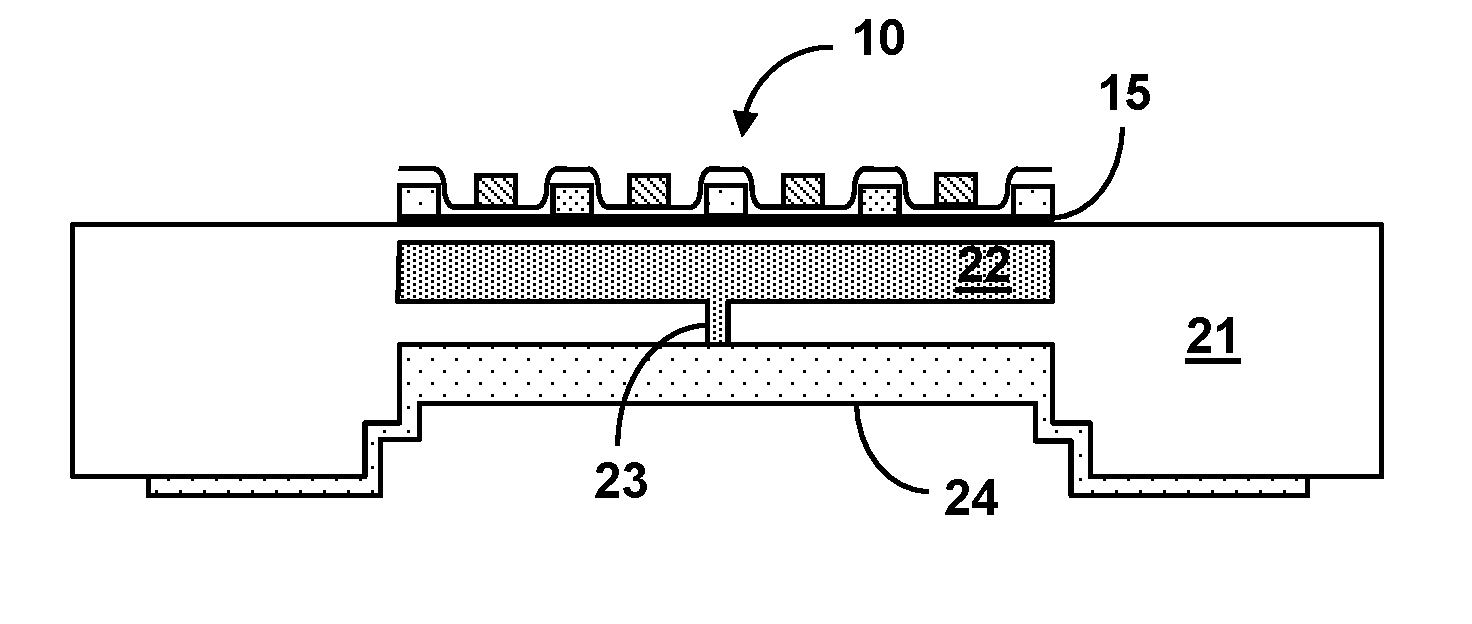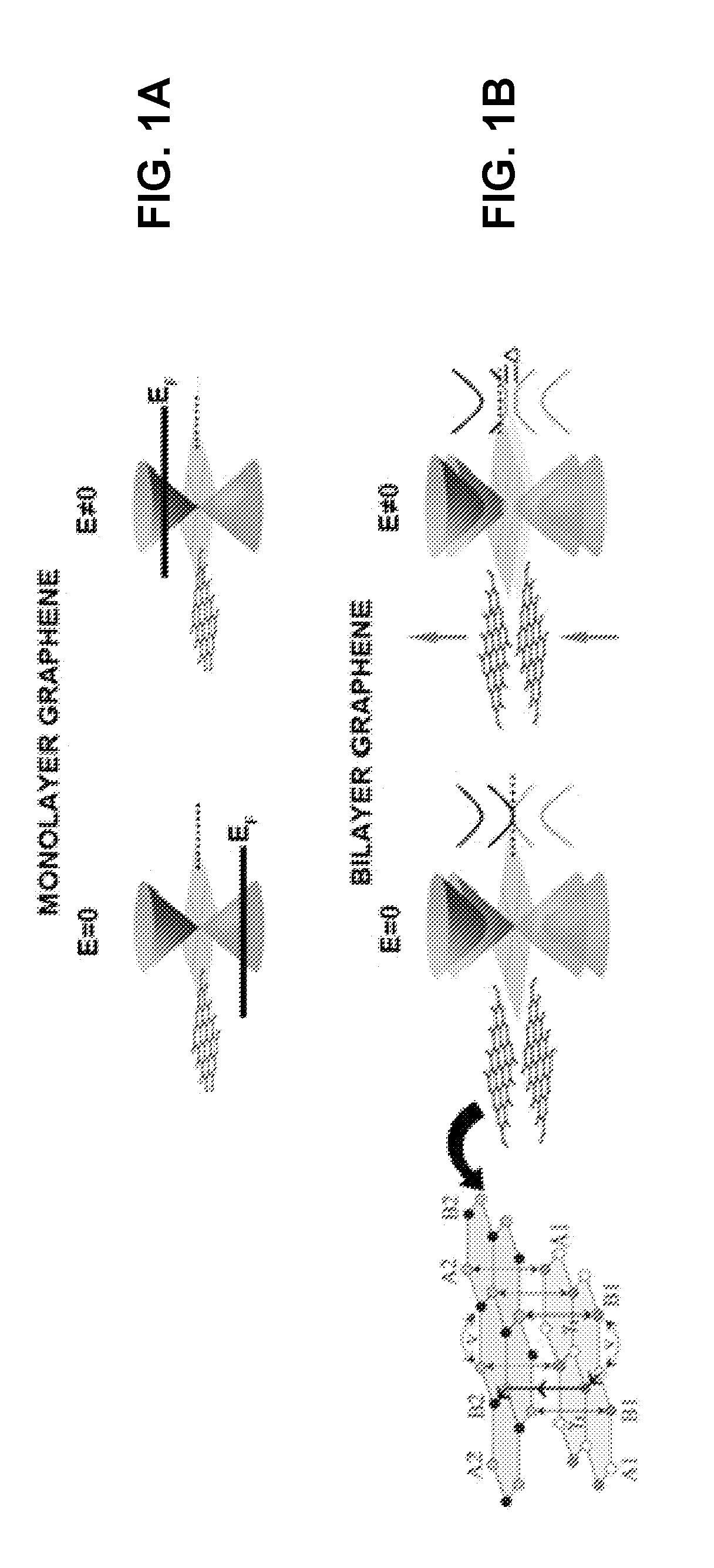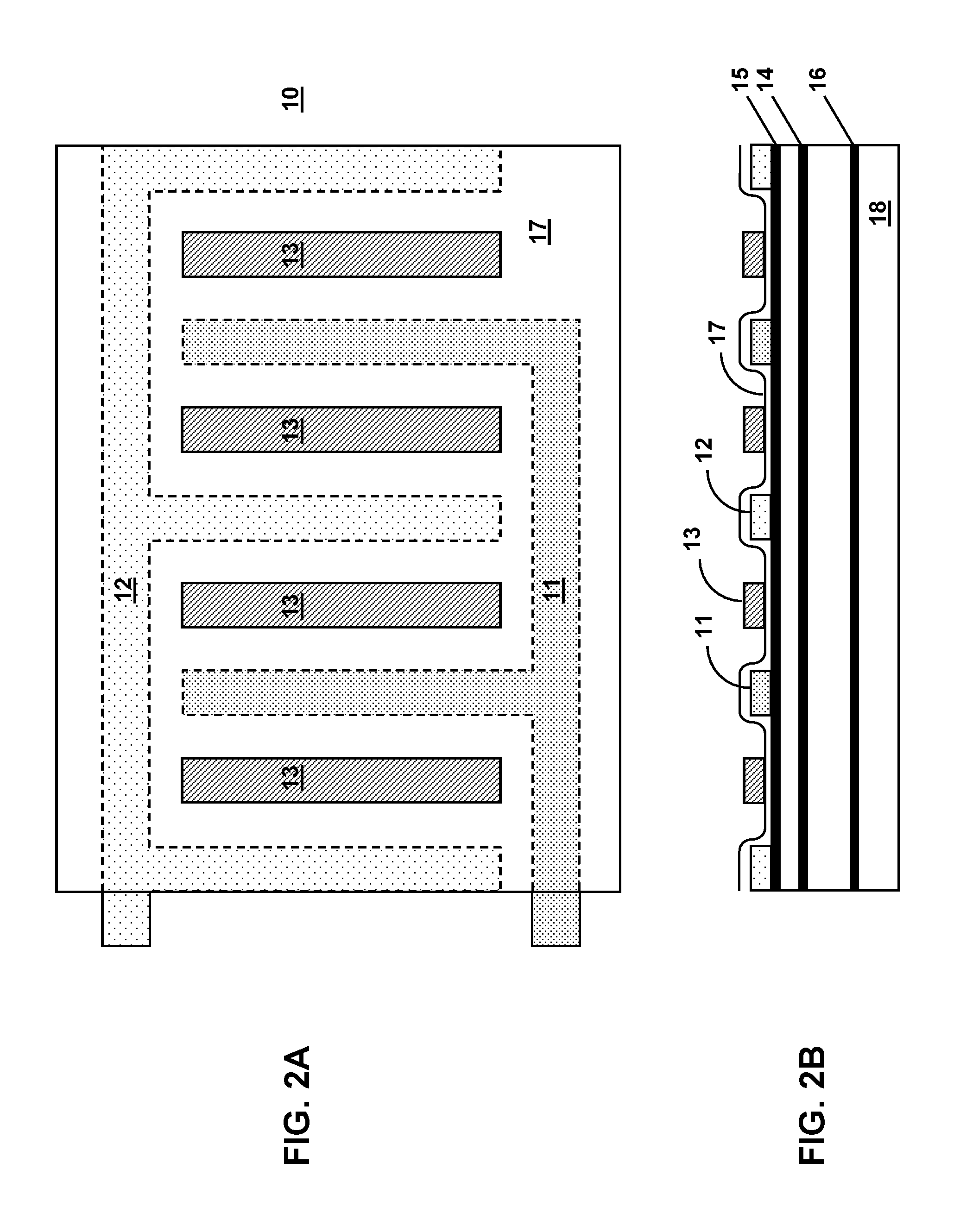Photodetector with Interdigitated Nanoelectrode Grating Antenna
a nano-electrode grating and photodetector technology, applied in the field of photodetectors, can solve the problems of reducing the quantum efficiency of the photodetector, limiting the utility of the device, and disadvantageous to the electro-optic response of the photodetector, so as to enhance the photodetection scheme, enhance the absorption in the active layer, and minimize the distance between electron hole creation and current collection
- Summary
- Abstract
- Description
- Claims
- Application Information
AI Technical Summary
Benefits of technology
Problems solved by technology
Method used
Image
Examples
Embodiment Construction
[0018]Monolayer graphene (MLG) is a semi-metal for which at typical pixel sizes it is impossible to create a bandgap. Thus, while previous work has demonstrated MLG's promise as an ultrafast and efficient photodetector, the material's nearly constant broadband response effectively removes any possibility for its use as a filter-less multispectral detector. See F. Xia et. al., Nature Nanotechnology 4, 839 (2009); F. Xia et al., Nano Letters 9, 1039 (2009); and R. R. Nair et al., Science 320, 1308 (2008). MLG's lack of bandgap arises due to its unique electronic structure characterized by two cones that intersect at the Dirac point, which is typically near the Fermi energy (EF), as shown in FIG. 1A. Upon application of a transverse electric field (i.e., E≠0), only the Fermi energy changes and no bandgap forms. Bilayer graphene, on the other hand, has four distinct bands that arise due to the sublattice that is created by the inequivalent sites (A1 vs. A2 and B1 vs. B2 in FIG. 1B) betw...
PUM
 Login to View More
Login to View More Abstract
Description
Claims
Application Information
 Login to View More
Login to View More - R&D
- Intellectual Property
- Life Sciences
- Materials
- Tech Scout
- Unparalleled Data Quality
- Higher Quality Content
- 60% Fewer Hallucinations
Browse by: Latest US Patents, China's latest patents, Technical Efficacy Thesaurus, Application Domain, Technology Topic, Popular Technical Reports.
© 2025 PatSnap. All rights reserved.Legal|Privacy policy|Modern Slavery Act Transparency Statement|Sitemap|About US| Contact US: help@patsnap.com



